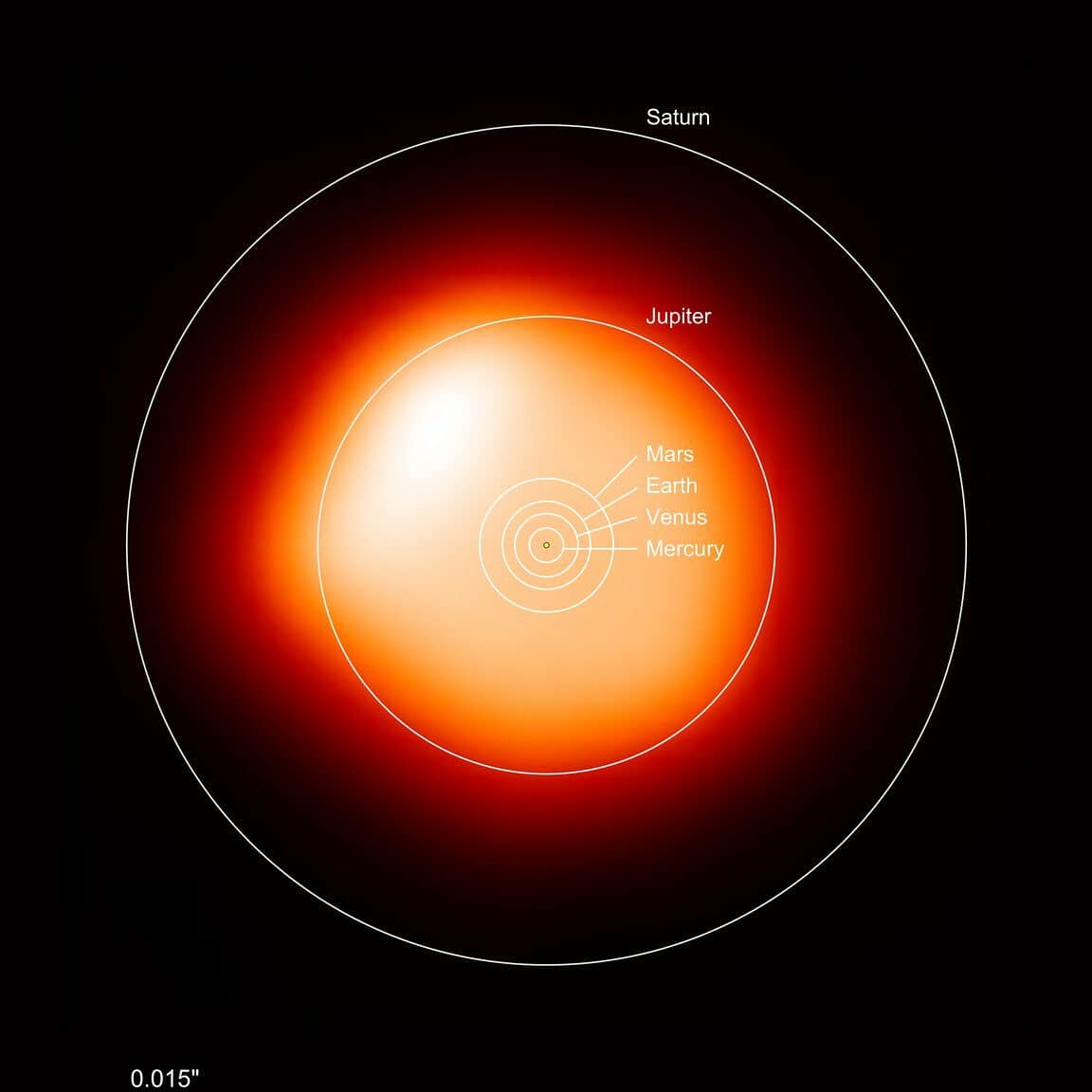
As space exploration continues, data on the largest stars in our galaxy is constantly being updated, reflecting the infinite nature of the universe. Currently, astrologers have amassed a significant amount of information about these colossal celestial objects.

It is worth noting that the dimensions of a star are not fixed. Certain astronomical objects, like the Sun, experience continuous expansion, resulting in changes in their overall sizes. Conversely, some stars undergo contraction, ultimately leading to their transformation into supernovae or their gravitational collapse into black holes.
The size variations of stars
Stars in the vastness of the universe exhibit diverse structures and sizes. It is important to acknowledge that there are specific size boundaries. If a celestial body is too small, it will not be able to sustain the necessary reactions and will transform into a planet rather than a star.
On the other hand, if a star becomes too massive, it will emit an excessive amount of energy, causing its gravitational field to ultimately fail in containing its outer layers, resulting in an explosive event.
Determining the size of a star solely through telescope observations is an impossible task.
A combination of three different approaches is employed for calculating star sizes:
- Utilizing an optical interferometer, a specialized instrument capable of making measurements regardless of distance.
- Conventional observational methods.
- Therefore, every single star can be categorized based on their size into the subsequent varieties:
Listing of the biggest stars in the Milky Way
The Big Dog’s VY
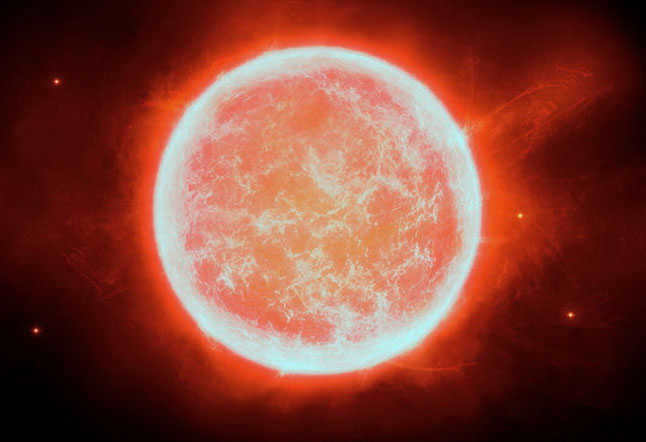
This red giant can be found in the constellation of Betelgeuse and stands out from its competitors due to its immense size. With a radius 1800 times larger than that of Earth, and a mass 25 times greater than the Sun, VY Big Dog is truly unique. There are no other known stars in our galaxy that come close to its brightness. In fact, VY Big Dog is an astonishing 270,000 times brighter than our Sun. To put its size into perspective, if we were to replace the Sun with VY Big Dog, its diameter would stretch all the way to Saturn. Located 5,000 light years away from Earth, VY Big Dog continues to captivate astronomers and astrophysicists alike.
Mu Cepheus
can be rephrased as
Mu Cepheus Star
.
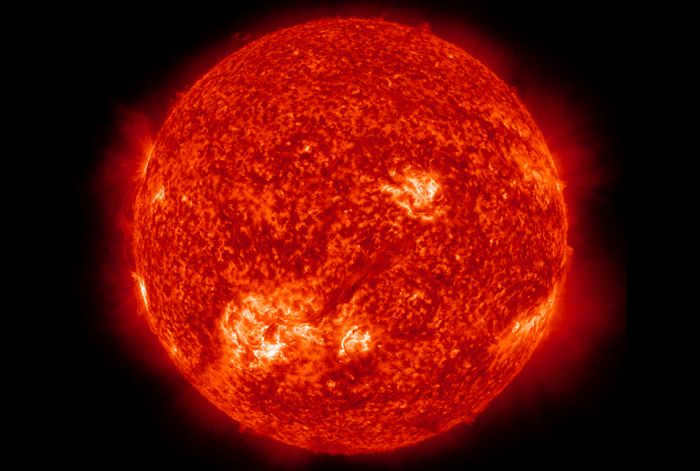

Mu Cepheus, located in the constellation Cepheus, is a red supergiant that stands out as one of the most brilliant and immense stars in the vastness of the Milky Way. It is positioned 6000 light-years away from our planet and boasts a size 20 times larger than the Sun. With a luminosity of 38,000 times that of our Sun and a radius of 988036000 km, Mu Cepheus is nearing the end of its lifespan and may undergo a supernova event, possibly leading to its rebirth.
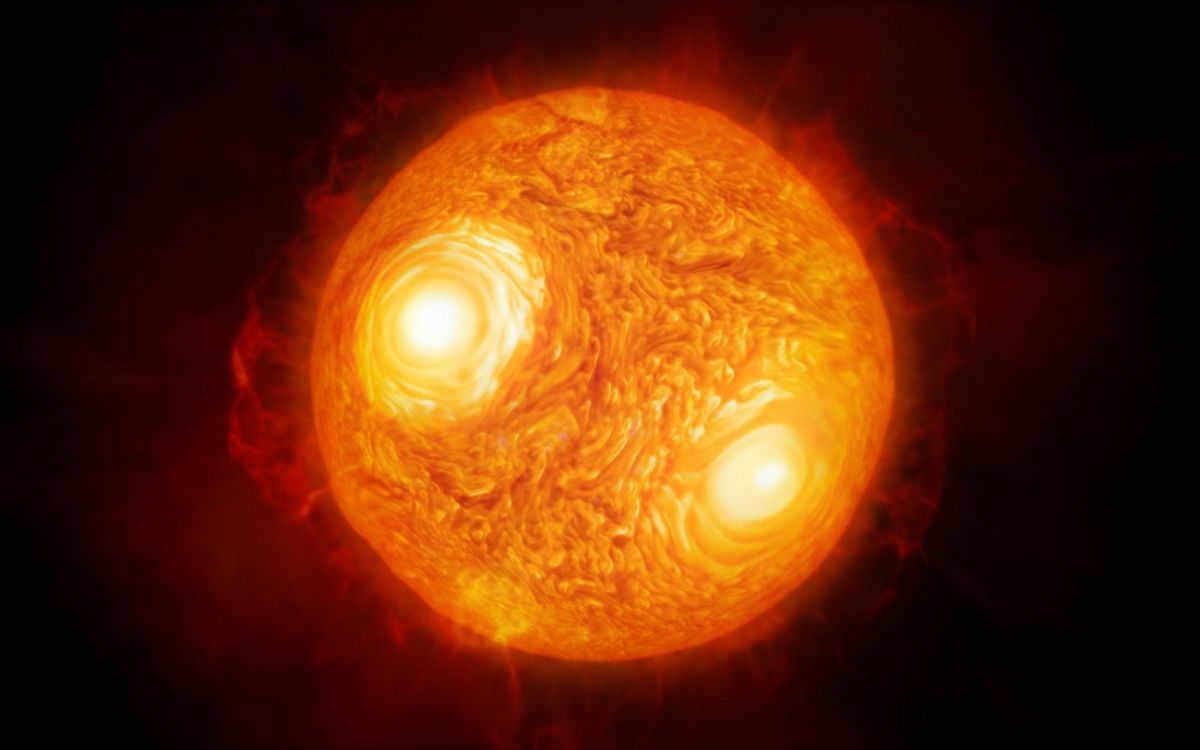
Antares, located in the Scorpius constellation, holds the distinction of being the most luminous star. With a mass twelve times greater than that of the Sun and a size 850 times larger, Antares is a true celestial giant. To put its magnitude into perspective, if Antares were placed at the center of our solar system, it would extend all the way to the orbit of Mars. This colossal star is situated at a distance of 550 light years from Earth, making it a remarkable sight in our night sky.
In terms of age, Antares has already surpassed the twelve million year mark, making it a stellar veteran. Despite its advanced age, Antares still shines brilliantly. However, astronomers predict that this star will meet a dramatic end in the next million years. Scientists believe that Antares will explode in a supernova, marking the final chapter of its extraordinary existence.
Rigel
Rigel is a bright blue star located in the constellation Orion. It is one of the most luminous stars in our galaxy and is easily visible to the naked eye. Rigel has a mass about 17 times that of the Sun and is estimated to be around 860 light-years away from Earth. It is a young star, with an age of only about 10 million years. Rigel is also known for its variability, as its brightness can fluctuate over time. Despite its distance, Rigel has been studied extensively by astronomers, who have learned a great deal about the star’s properties and evolution.
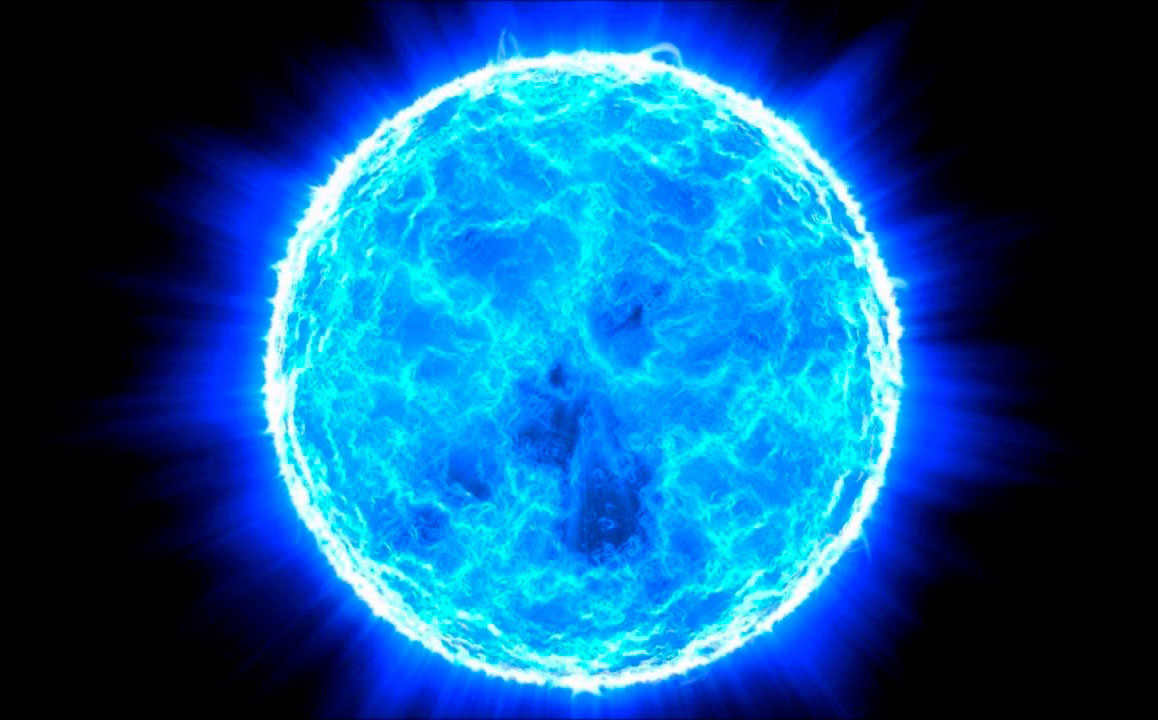

Rigel, located in the constellation Orion, is a highly luminous star. It is most visible during the winter months in the northern hemisphere and during the summer months in the southern hemisphere. Rigel shines 12,000 times brighter than the Sun and is located approximately 860 light years away from Earth. With a mass 24 times greater than the Sun, Rigel is considered to be an energy-wasting star, which may lead to its relatively short lifespan, according to scientists.
Arcturus
can be rephrased as
The brightest star in the northern celestial hemisphere
.
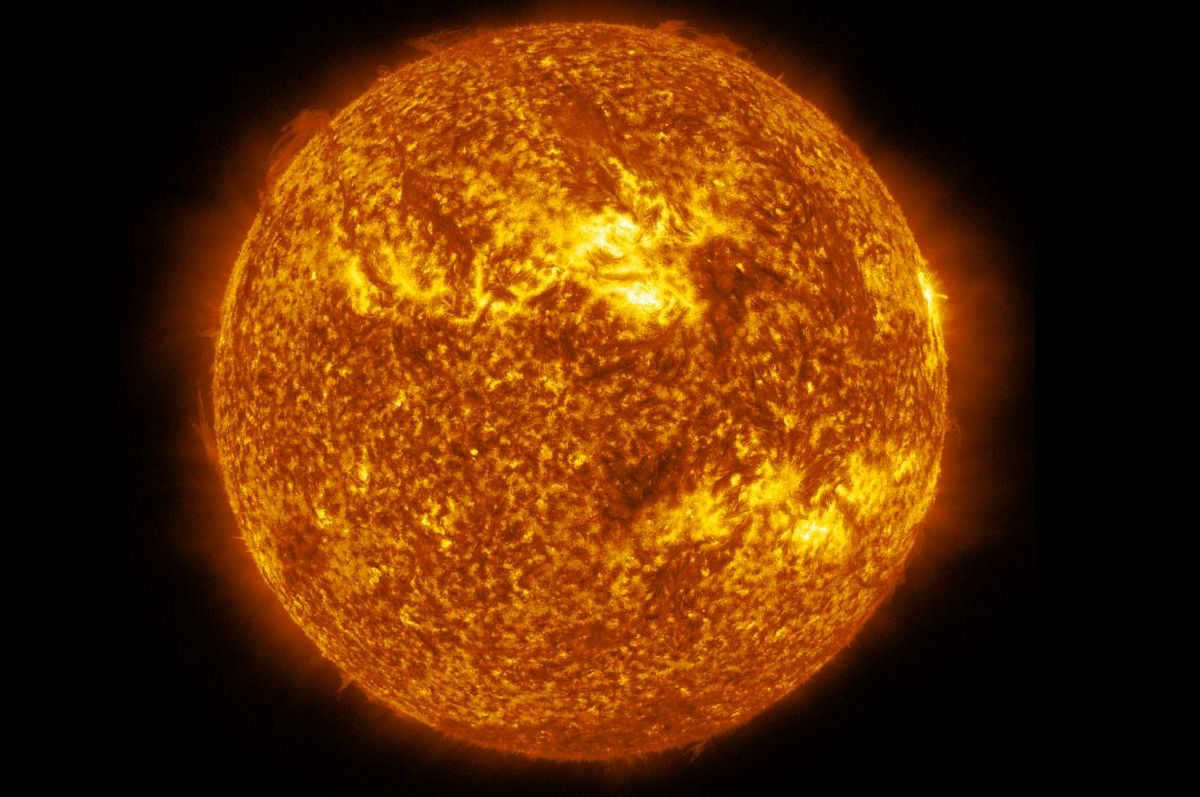
The brightest star in the Volopassus constellation is this red giant. It is located 38 light-years away from Earth. With a size 25 times larger than the Sun and a surface temperature of 4,000 degrees Celsius, Arcturus is an impressive celestial body. This star has been shining for an astonishing 7,100,000,000,000 years. As it continues to expand, it will eventually detach from its white shell and transform into a white dwarf.
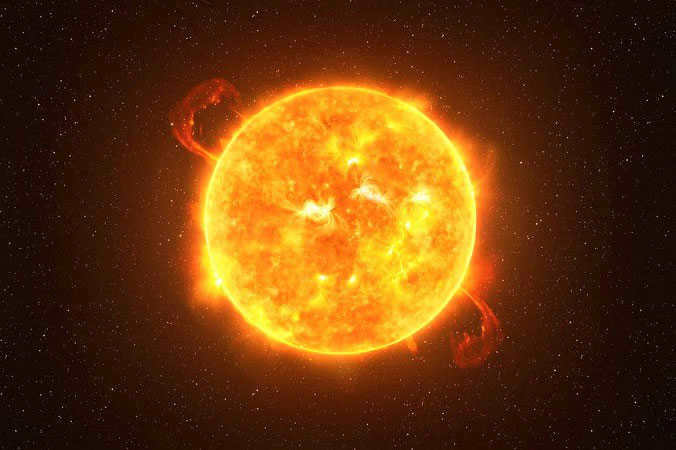
Betelgeuse, the second brightest star in the Orion constellation, is a red supergiant that can be almost as easily seen in the night sky as Sirius. With a mass 20 times greater than that of the Sun, a radius 1200 times larger, and located 640 light-years away from Earth, Betelgeuse is nearing the end of its life cycle.
Polar A
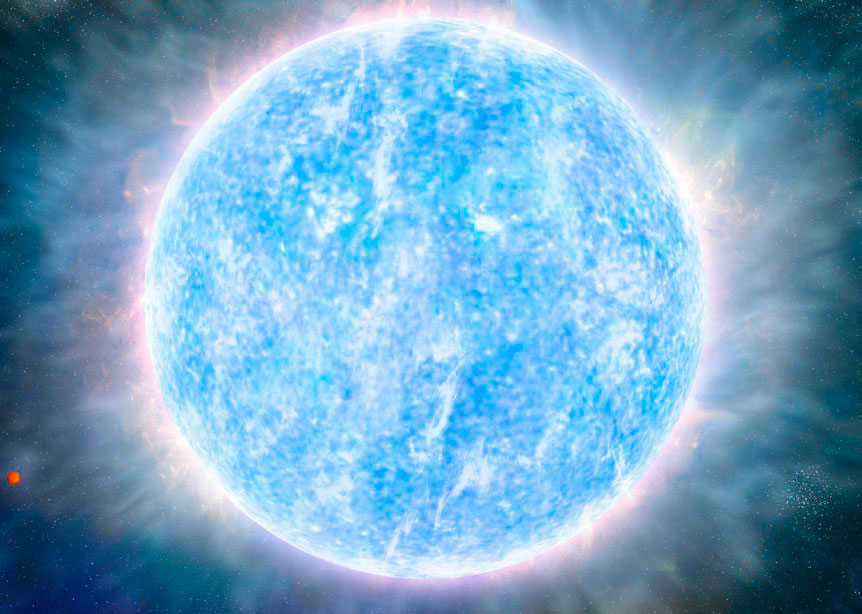
Polaris A, situated in a triple pulsating stellar system, is a prominent celestial body. Polaris is easily observable to the unaided eye due to its close proximity to Earth. It exhibits a magnitude 2000 times greater than the Sun and has a size 6.5 times larger than our star. Polaris is estimated to be around 60-65 million years old.
Aldebaran
Aldebaran is a bright star in the constellation Taurus. It is one of the largest and brightest stars in the night sky. Aldebaran is known for its distinctive red color, which is caused by its surface temperature and composition. The star is located about 65 light-years away from Earth, making it relatively close in astronomical terms. It is also a member of the Hyades cluster, a group of stars that are gravitationally bound together. Aldebaran has been studied extensively by astronomers and has provided valuable insights into stellar evolution and the structure of the universe. Its unique characteristics make it a fascinating object of study for scientists and a beautiful sight for stargazers.
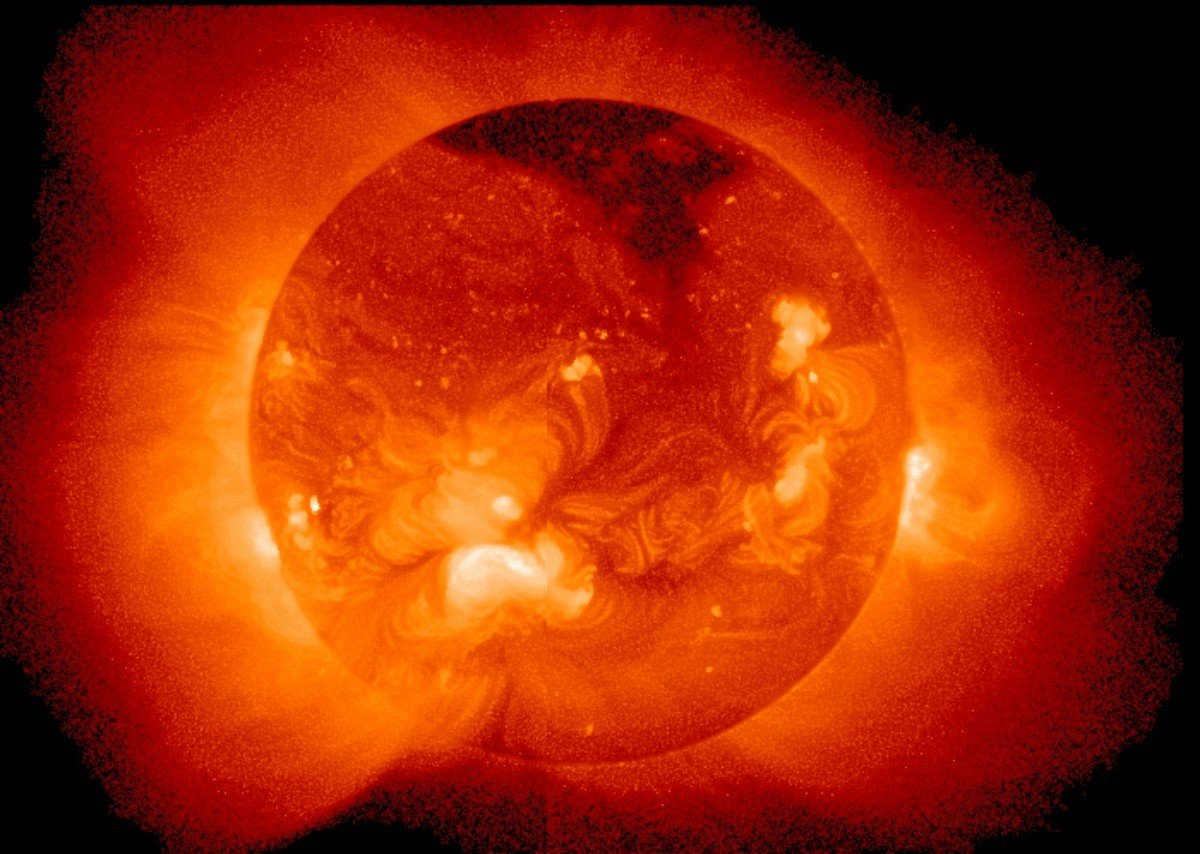

Aldebaran, located in the constellation Taurus, is an orange giant star. It sits relatively close to our planet, just 65 light-years away. With a radius of approximately 30,700 kilometers, Aldebaran is an impressive 44 times larger than the sun. Its surface temperature is around 3,600 degrees Celsius, making it quite hot. In terms of brightness, Aldebaran outshines the sun by a factor of 425.
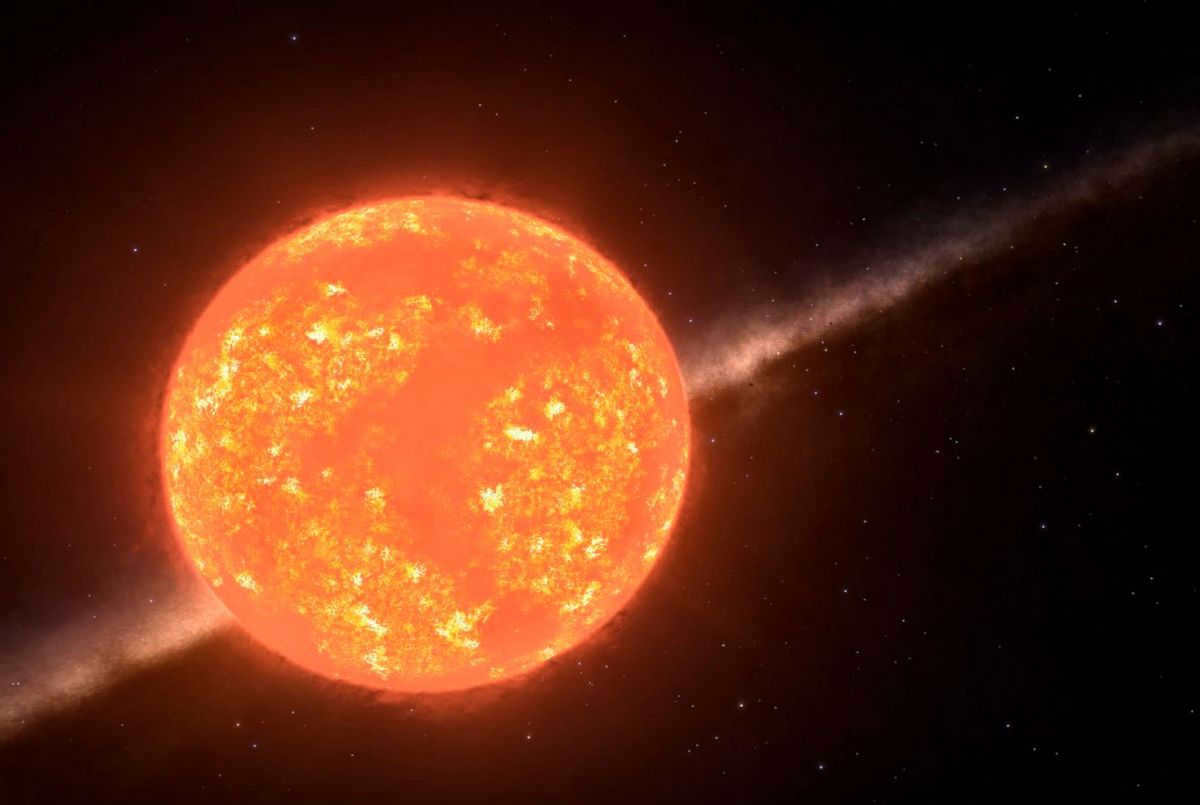
The star, which is situated in the constellation Cepheus, is positioned at a distance of 5000 light years away from our planet Earth. It falls under the category of red supergiant celestial bodies and is an astounding 1100 times bigger in size compared to our own Sun. Hypergiant stars like this one are quite uncommon and are typically found along with cooler star companions.
Pollux
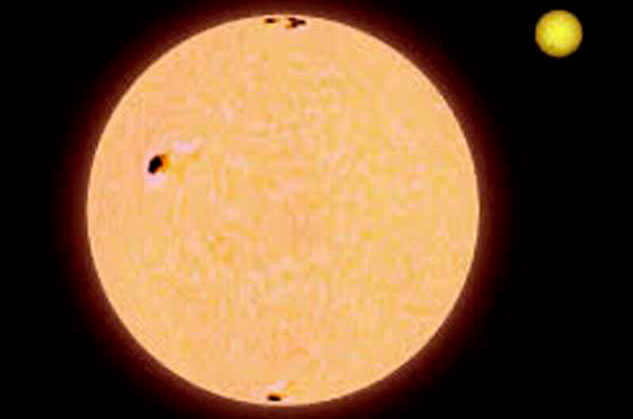

Pollux, situated in the constellation Gemini, is the most luminous star. This gigantic orange star is positioned 34 light-years away from our planet. It surpasses the Sun in size by a factor of 9 and shines twice as bright. The surface temperature of Pollux measures 4,600 degrees Celsius.
Frequently Asked Questions
Common Queries
Why do the largest stars have short lifespans?
The reason why the largest stars have short lifespans is because they are unable to control their intense energy, leading to their rapid demise. On the other hand, dwarf stars have much longer lifespans.
Is it possible to measure stars in real-world environments?
Unfortunately, it is not feasible to measure stars in real-world settings. Scientists rely on careful calculations to determine the size and mass of stars, and these measurements are only approximations.
Is there a correlation between the size of a star and its lifespan?
No, there is no direct correlation between the size of a star and its lifespan. The lifespan of a star is determined by various factors, such as its mass and composition.
Does the size of a star affect its visibility from Earth?
No, the brightness of a star and its proximity to Earth are the primary factors that determine its visibility. The size of the star does not play a significant role in this regard.
Watch a video showcasing the biggest stars in the universe
When it comes to stars, our Sun is pretty average in size compared to others in the Universe. There are numerous stars that are larger than our Sun, and they can be found in other solar systems, accompanied by planets that revolve around them.
In this piece, we will provide you with information about the stars that surpass the Sun in size, as well as their unique characteristics and the way they were discovered.

The sun is commonly regarded as the most significant star in our solar system, and it is widely recognized for its immense size, which could easily fit around 1,300,000 XNUMX XNUMX XNUMX Earths. While this fact is undeniably extraordinary, what is even more remarkable is that our Sun is actually relatively small in comparison to other stars.
Contrary to popular belief, there exist stars in the vast expanse of the universe that far surpass the Sun in size, to the point where they would extend beyond the orbit of Saturn if they were located within our solar system. Bearing this in mind, this article will delve into the topic of stars that are larger than the Sun, providing you with an opportunity to expand your knowledge on the subject.
Our Sun has a diameter of approximately 1,400,000 XNUMX XNUMX XNUMX kilometers, but it is by no means the largest star in the Universe, as there are other stars that dwarf it in size.
Aldebaran (61,000,000 XNUMX XNUMX kilometers)
Aldebaran, a star that belongs to the constellation Taurus, is recognized as the thirteenth most luminous star in the entire sky. Despite being approximately 60 times larger than our Sun, this orange giant star does not possess double the mass of our star.
This could suggest that it has undergone various life stages where it has produced carbon, nitrogen, and oxygen, and it is currently at a stage of expansion close to transitioning into a red giant, situated approximately 65 light-years away from our planet.
Rigel (97,000,000 kilometers)
Rigel is an incredibly large star, surpassing even the size of the Sun. Its size is truly astonishing. This blue supergiant star is situated approximately 860 light-years away from Earth. It is renowned for being the brightest star in the Orion constellation. Rigel is so massive that if it were a part of our solar system, it would stretch all the way to Mercury. Scientists expect that it will eventually undergo a supernova explosion within a few million years due to its long lifespan.
Star Cannon (425,000,000,000 kilometers)
Taking yet another incredible leap, we encounter the Gun Star, which is known as a blue supergiant, and in the event it were to be situated in our solar system, it could potentially even reach the orbit of Mars, thereby having the ability to engulf the entire Earth.
This star has the capacity to emit light that is equivalent to over 10 million suns, thus making it one of the most luminous stars within our entire galaxy. Situated nearly 26,000 light-years away from Earth, it is positioned in close proximity to the center of the Milky Way.
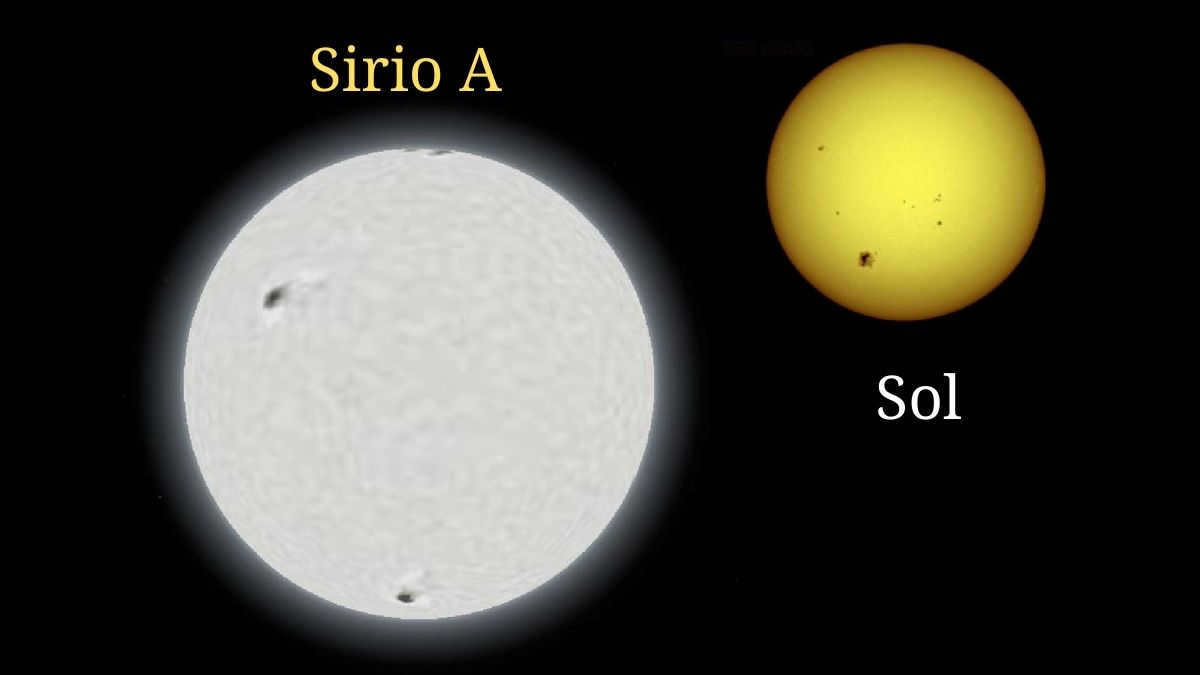
Antares A is twice as large as Gun Star and is characterized as a red supergiant located approximately 550 light-years away from Earth.
One of its most astonishing features, in addition to its size, is the expectation that it is on the verge of a cataclysmic explosion, potentially resulting in the formation of a neutron star (regarded as one of the most compact entities in the cosmos).
Betelgeuse (1,300,000,000,000 XNUMX XNUMX XNUMX XNUMX XNUMX km)
Betelgeuse, situated 642 light-years away, is the colossal star of our galaxy. It shines as the ninth brightest celestial body in the night sky.
Its enormity is such that it could encompass the entire orbit of Jupiter, placing it right at the heart of our solar system. With its immense size and low surface temperature, scientists predict that it will eventually explode as a supernova in a few thousand years. This explosion will leave a mark in the sky larger than the Moon itself.
Mu Cepheus (1,753,000,000 XNUMX XNUMX XNUMX XNUMX XNUMX km )
Situated at a distance of 6,000 light-years, Mu Cepheus comprises of a gigantic red supergiant star, which is of such immense proportions that it would encompass the orbit of Saturn if it were positioned at the center of our solar system.
This celestial body is a member of the Cepheus constellation and is distinguished by its vivid red hue, which makes it easily identifiable even through inexpensive telescopes.
VY Canis Majoris (2,000,000,000,000,000 kilometers)
Situated approximately 3,840 light-years from our planet, VY Canis Majoris is a colossal red supergiant that is so massive that if it were placed at the center of our solar system, it would extend beyond the orbit of Saturn.
UY Scuti (2,400,000,000,000,000 kilometers)
UY Scuti stands out as the largest star currently known in our galaxy, located at a distance of 9,500 light-years. Its immense size is demonstrated by the fact that it would take approximately 3,000 years to circumnavigate its surface in a non-stop flight traveling at a speed of about 900 km/h. This massive star generates various metal atoms in its core and is speculated to meet its demise in a supernova explosion, potentially creating a black hole.
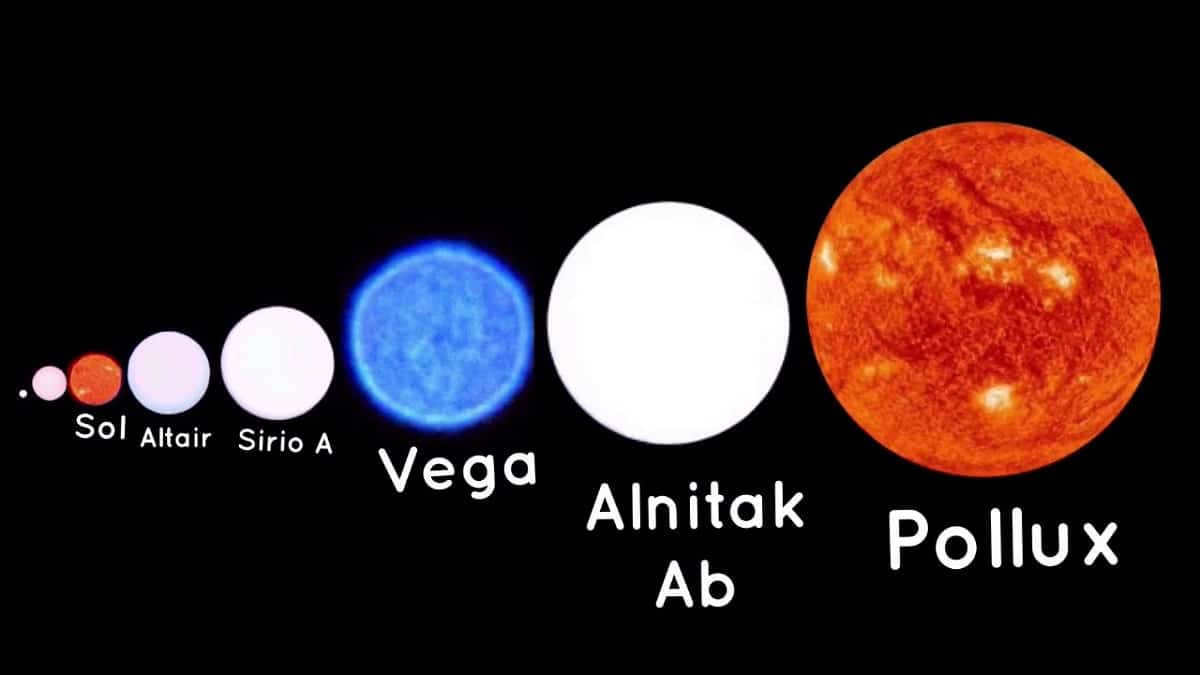
Pollux: 12,000,000 kilometers.
Pollux is a massive orange star located in the Gemini constellation. Although it ranks tenth in size among other stars, it is nearly ten times larger than our Sun. Additionally, it is the seventeenth most luminous star visible in the night sky. Situated at a distance of 33.7 light-years from our planet, Pollux holds the distinction of being the nearest star on this roster.
Arthur: 36,000,000 XNUMX XNUMX kilometers.
We are continuing our journey of exploration in Arthur’s Star, also known as Arcturus. This star is the third brightest in the night sky and is classified as a red giant. In comparison to the previous star we discussed, it is the closest one at a distance of 36.7 light-years away. Arcturus is so massive that it is believed to be undergoing fusion of helium and carbon at its core. It is important to note that all chemical elements originate from within stars, and the heavier the element, the more energy is required for its creation. Our Sun, being relatively small, can only produce the second lightest element, helium.
This serves as a reminder of the vastness of the universe, with our solar system being just a small part of it. By understanding stars larger than the Sun and their unique characteristics, we can gain a deeper appreciation for the diversity and complexity of the cosmos.
The information presented in this article adheres to our editorial ethics guidelines. If you spot any errors, please click here to report them.
Summary of the Full Article: Network Meteorology “astronomy” stars that are larger than our Sun
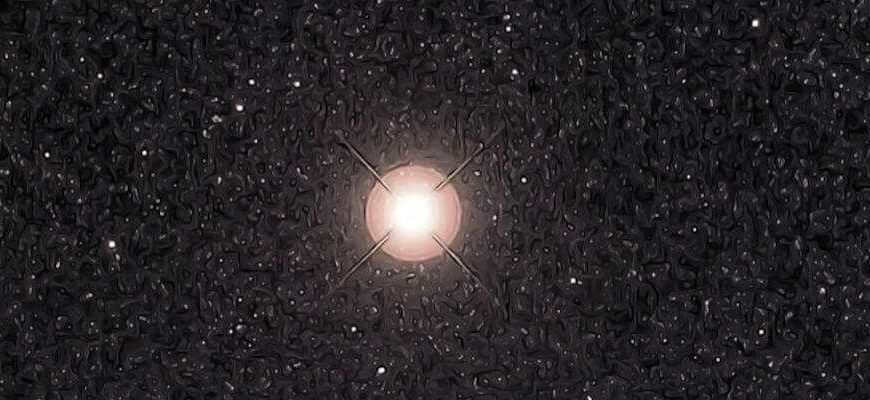
The presence of the red supergiant star known as Betelgeuse has sparked the imagination of many astronomy enthusiasts, leading to various doomsday scenarios. This is due to the fact that Betelgeuse is expected to undergo a supernova explosion in the near future, which would result in a massive release of energy. Additionally, the proximity of Betelgeuse to our planet, with a distance of only approximately 520-700 light years, adds to the intrigue. Some speculate that the deadly radiation from the dying star will annihilate all life on Earth.
However, it is important to clarify that the predictions of imminent destruction are greatly exaggerated. The terms “near” and “soon” hold different meanings for astronomers compared to the general public. The timeframe for astronomical events is often measured in millions or billions of years, rather than human lifetimes. Therefore, while Betelgeuse’s eventual explosion is a fascinating topic, there is no immediate cause for concern regarding the survival of life on Earth.
First of all, let’s comprehend the definition of “soon”. According to astronomers, Betelgeuse is approximately 10 million years old. It initiated the transformation into a red giant roughly 40,000 years ago, which marked the commencement of a thermonuclear fusion reaction involving helium atoms in its core. This reaction leads to the creation of diverse heavy elements, signifying the start of the star’s demise. Ultimately, the star’s core will undergo a gravitational collapse, triggering a supernova explosion. At present, scientists are unable to accurately determine the exact duration of this process. Astronomers can only provide approximate estimations based on models of stellar evolution, which are reliant on Betelgeuse’s mass and rotation period. However, these parameters are not definitively known.
If Betelgeuse has a mass that is approximately 20 times greater than that of the Sun, as indicated by the majority of scientific studies, it is expected to undergo a supernova event within the next 100,000 years. However, it is more probable that this explosion will occur at a later time. Although there is a possibility that it could happen as soon as tomorrow. In the event that you observe a rapidly expanding red dot on the horizon this afternoon, it is advisable to gather your important documents, valuables, and pets, and seek shelter in the basement. (Hopefully, you have already prepared by stocking up on canned goods to sustain yourself for the next few years.) ��
Nonetheless, it is important to acknowledge that the likelihood of Betelgeuse undergoing a supernova during your lifetime is less than 0.1%. This estimation is based on the most unfavorable circumstances.
Furthermore, if Betelgeuse possesses a mass that is approximately 15 times greater than that of the Sun, as suggested by several other investigations, and if it rotates at a slow pace, it may require one million years or even longer to undergo a supernova event. In such a scenario, the likelihood of Betelgeuse posing a threat to human civilization is essentially nonexistent.
In the vicinity, but not excessively close
Let us now consider the notion of “close.” Determining the distance to a luminous red giant star like Betelgeuse is quite challenging. Different measurement techniques yield values ranging from 520 to nearly 700 light years. This is approximately 150 times farther away than Alpha Centauri. Betelgeuse may appear formidable in our night sky due to its immense size and intense brightness. However, even if we utilize the closest estimated distance to Betelgeuse, it remains too distant to cause significant harm to Earth.
The material ejected from the supernova explosion will rapidly expand and cool. By the time it reaches Earth, its density and temperature will be insignificant.
The radiation emitted from the supernova explosion will likely have minimal effects on the Earth’s environment.
Betelgeuse is located too far away to significantly ionize the Earth’s atmosphere. To evaluate the potential risk, we can examine the effects of past supernovae near us. However, there is no clear evidence of such occurrences in our history. This strongly suggests that only the closest supernovae pose a threat to life on our planet.
May all be in good health
A recent investigation suggests that there is chemical proof supporting the existence of two supernovae during ancient times. These occurrences took place approximately 1.7 to 3.2 million years ago and happened at a distance of around 300 light years away from our planet. As a result, the Earth was exposed to four times the expected radiation dose from Betelgeuse. Nonetheless, it remains uncertain whether this had any impact on life. It is plausible that these incidents only caused a minor cooling effect on the climate. Alternatively, the climate change may have been entirely unrelated to the supernovae. In any case, there were no widespread extinctions during that period.

Betelgeuse, also known as Alpha Orionis, is an impressive red supergiant and a star that varies in brightness. It typically ranks as the tenth most luminous star in the night sky and is the second brightest star within the Orion constellation. However, there are occasions when it outshines the constellation’s brightest star, Rigel, which is a blue-white supergiant. This makes for a striking contrast in color. Interestingly, when viewed at an infrared wavelength of 2 microns, Betelgeuse becomes the most prominent object in the night sky. The name Betelgeuse is derived from the Arabic term “yad al jauza,” which translates to “twin hand.” This name is fitting as the Orion constellation is sometimes referred to as Gemini in Arabic astronomy.
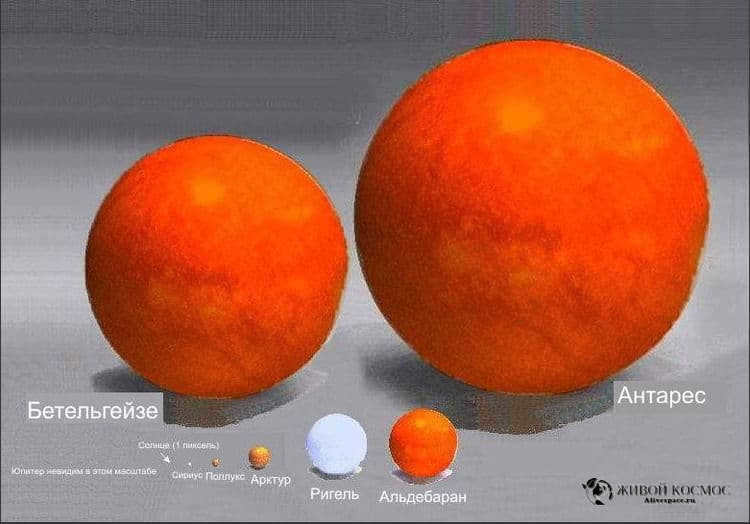

Betelgeuse is one of just two red supergiants with an apparent stellar magnitude of approximately one. The other red supergiant is Antares. Betelgeuse is among the largest stars that can be seen with the naked eye. Its angular size has been measured to be around -1.27 mm, which corresponds to a radius of 2.9 astronomical units at a distance of 425 light-years. Therefore, if Betelgeuse were to replace the Sun, it would extend as far as the asteroid belt. However, the uncertainty surrounding the distance to Betelgeuse allows for a range of possible sizes, both larger and smaller. The most extreme estimates suggest a size comparable to Jupiter’s orbit, which would also result in a corresponding range of luminosity (including infrared light) that is 40,000-100,000 times that of the Sun.
The disk of Betelgeuse and the dusty environment around it
The star’s disk is of such immense size that its dimensions were initially determined using speckle interferometry in 1975. Subsequently, the first visual representation was captured by the Hubble Space Telescope in 1995, revealing a dynamic atmosphere with enigmatic hot regions on the star’s surface. Among these regions, one particular spot spans over 10 times the Earth’s diameter and exhibits temperatures at least 2000 K higher than the surrounding surface. The scientists responsible for these observations also detected an intriguing 420-day cycle, during which the star’s luminosity undergoes significant fluctuations. It is hypothesized that these fluctuations are a consequence of turbulences occurring beneath the star’s surface, potentially leading to the shifting of a bright spot over time. This movement of the spot may ultimately account for the cyclic changes in the star’s brightness.
Betelgeuse is encompassed by enormous dust clouds, which astronomers first captured an image of in 1998 using a powerful mirror telescope and specialized technology.
Anticipated Evolution
Currently, it is highly probable that Betelgeuse is still undergoing the process of synthesizing helium from the remaining hydrogen in its core. Theoretical researchers propose that the mass of this celestial object has already decreased to a range between 12 and 17 times that of our Sun. If it leans towards the upper end of this range, elements such as neon, magnesium, sodium, and silicon are already being generated within Betelgeuse’s core, extending all the way to iron.
In the future (and relatively soon), this star will experience a spectacular explosion known as a supernova.
If the star’s mass falls near or below the lower end of the projected range, it has the potential to eventually transform into a rare white dwarf composed of neon and oxygen, comparable in size to our own planet.
The estimated distance from us to Betelgeuse is around 400 to 650 light years, which is not considered close by any means. However, it is one of the nearest stars to the Sun that has the potential to go supernova. The exact timing of this event is uncertain and it is even possible that it has already occurred, considering the time it takes for light to travel from Betelgeuse to us, which is at least four centuries. Scientists predict that this star will most likely explode within the next 100,000 years, which is a relatively short period of time in cosmic terms.
When this momentous day does arrive, Betelgeuse will undergo a type II supernova, causing its outer layers to be ejected into space at approximately five percent of the speed of light. The core of the star will also explode and is expected to transform into a neutron star with a diameter of around 20 kilometers.
The Betelgeuse supernova is expected to shine as brightly as the full moon, making it visible for a period of two to three months, even during daylight hours. Fortunately, we will not be in any danger due to its distance from us. The tremendous amount of energy released by the supernova will disperse throughout space, forming a growing bubble that spans millions of square light years. Any ultraviolet flash emitted from the explosion that reaches Earth will be milder than the UV radiation we typically receive from the Sun. Additionally, even an X-ray flare would be less intense than a typical solar flare. At most, this event may cause minor disruptions to communication and navigation satellites.
Type II supernovae do not pose a danger to planets located hundreds of light-years away. The lethal radiation emitted from these explosions disperses uniformly in every direction and eventually becomes too feeble to cause any apprehension. Therefore, we or our future generations can confidently anticipate the magnificent demise of Betelgeuse without any worry about the potential ramifications.
Where can I locate Betelgeuse in the celestial sphere?
To spot Betelgeuse in the night sky, you can rely solely on your eyesight. Begin by identifying the trio of stars that form Orion’s Belt.
Next, direct your attention to the brilliant reddish star positioned slightly above and to the left of the Belt. This particular star is known as Betelgeuse and signifies Orion’s right shoulder (or left, depending on your vantage point).
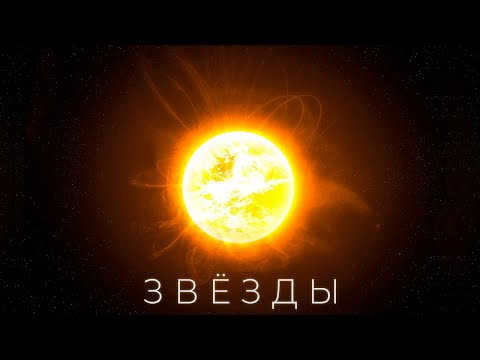
Betelgeuse is known as Alpha Orionis because it is the alpha star in the constellation Orion. It is classified as a red supergiant, which are the largest stars in terms of volume, although not necessarily the most massive.
Although Betelgeuse is not the brightest star in the Orion constellation at first glance – that distinction belongs to Rigel-beta – it is actually the brightest when observed in the infrared and near-red spectra. This brightness is a direct result of its surface temperature.
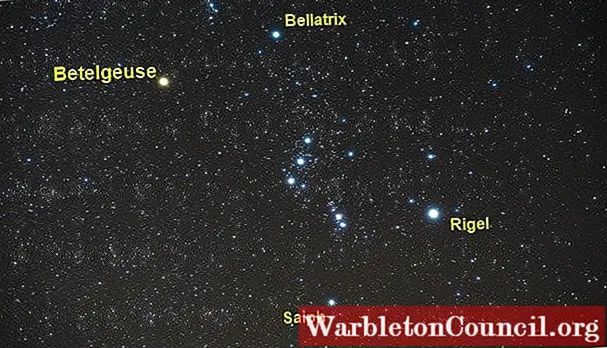
Due to its immense luminosity, it is believed that this particular star has been observed by humans since ancient times. In fact, it is typically ranked as the tenth brightest star in the night sky and the second brightest star in the constellation of Orion, as previously mentioned.
In ancient China, astronomers from the first century described Betelgeuse as a yellow star, while others, like Ptolemy, characterized it as orange or reddish. Interestingly, John Herschel, a renowned astronomer from the 19th century, noticed that the brightness of Betelgeuse was not constant.
The reason behind this variability lies in the fact that all stars undergo evolution, causing their colors to change over time as they expel gas and dust from their outer layers. Consequently, this also affects their brightness levels.
Key Attributes
Betelgeuse serves as a prime illustration of a red supergiant star, displaying a spectral class of K or M and a luminosity type of I.
These stars possess lower temperatures; in the specific case of Betelgeuse, it is estimated to be approximately 3000 K. Temperature and color are interconnected; for instance, a heated piece of iron appears red, but as the temperature increases, it transitions to white.
Despite its relatively young age of 8 million years, Betelgeuse rapidly evolved from the main sequence due to the depletion of its nuclear fuel and expanded to its current magnitude.
These colossal stars also exhibit variable luminosities. Its brightness has experienced a decline in recent years, causing concern within the scientific community, although it has shown signs of recovery as of late.
Here are the primary characteristics of Betelgeuse:
–Distance: 500 to 780 light years.
–Body: 17 to 25 solar masses.
–Radio: 890 to 960 solar radii.
–Brightness: 90,000 to 150,000 solar brightness.
–Evolutionary state: Red supergiant.
–Visible magnitude: +0.5 (visible) -3.0 (infrared J band) -4.05 (infrared K band).
–Age: Between 8 and 10 million years.
–Radial velocity: +21.0 km/s.
Betelgeuse is a red supergiant star with a mass of 17 to 25 solar masses. It has a radio size of 890 to 960 solar radii and a brightness of 90,000 to 150,000 times that of the sun. Betelgeuse is in its evolutionary state as a red supergiant and has a visible magnitude of +0.5 in the visible spectrum, -3.0 in the infrared J band, and -4.05 in the infrared K band. It is estimated to be between 8 and 10 million years old and has a radial velocity of +21.0 km/s. Betelgeuse belongs to the spectral class M and is classified as type M1-2 Ia-ab, indicating its status as an intermediate luminosity supergiant. The light spectrum of Betelgeuse serves as a reference for classifying other stars in the Yerkes diagram in spectral classification.
Despite its immense size, it is only 10 to 20 times more massive than our Sun. However, its mass is substantial enough that its stellar evolution occurs rapidly, as the lifespan of a star is inversely proportional to the square of its mass.
Formation and Development
Betelgeuse, like all stars, originated from a vast cloud of gaseous hydrogen, helium, and cosmic dust containing other chemical elements. This cloud condensed around a central point and increased its mass density.
There is evidence suggesting that this process takes place in the creation of star clusters, typically found within nebulae composed of cold, tenuous interstellar matter.
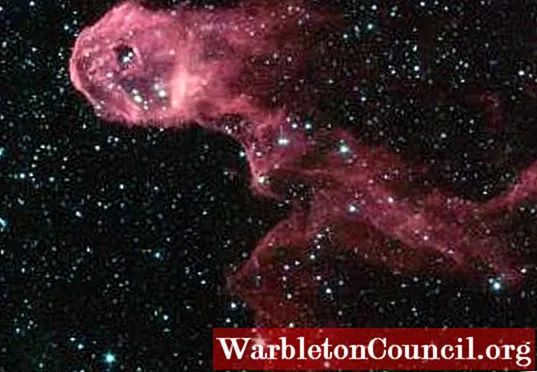
The creation of a star, its existence, and its demise, are an eternal battle involving:
- The force of gravity, which aims to compress all matter into a single point, and
- The individual kinetic energy of each particle, which collectively exerts the necessary pressure to escape and expand from the point of attraction.
When the initial cloud undergoes compression towards the core, a protostar emerges and begins to emit radiation.
Gravitational attraction causes the atomic nuclei to accumulate kinetic energy, but once they reach the densest core of the protostar, they emit electromagnetic radiation and begin to shine.
Once the hydrogen nuclei are sufficiently compressed and possess enough kinetic energy to overcome electrostatic repulsion, a powerful force of attraction is initiated, leading to the fusion of the nuclei.
Through the fusion of hydrogen nuclei, helium and neutron nuclei are produced, along with a significant amount of kinetic energy and electromagnetic radiation. This is a result of the mass loss in the nuclear reaction.
Essentially, this mechanism opposes the gravitational compression of the star through the combined forces of kinetic and radiation pressure. As long as the star maintains this equilibrium, it is considered to be in the main sequence.
Stage of a Red Giant
The process described above is not permanent for extremely massive stars, as the conversion of hydrogen to helium depletes the fuel.
Consequently, the pressure that opposes gravitational collapse decreases, causing the star’s core to become denser while the outer layer expands and releases energetic particles into space, forming a dust cloud around the star.
Once this occurs, the star enters a red giant stage, which is the current state of Betelgeuse.
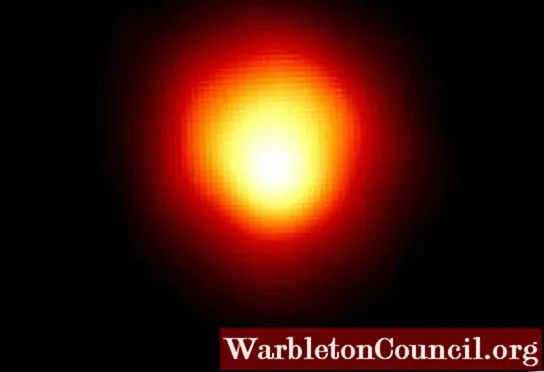
The duration of a star’s life and its ultimate fate are determined by its mass in stellar evolution.
Supergiants, such as Betelgeuse, have relatively short lifespans as they quickly transition through the main sequence, while red dwarfs with lower masses emit a more subdued glow for millions of years.
Betelgeuse, believed to be approximately 10 million years old, is thought to be in the final stages of its evolutionary cycle. Scientists predict that within the next 100,000 years, it will reach the end of its life cycle with a powerful supernova explosion.
Formation and Composition
Betelgeuse possesses a compact core enveloped by a mantle and an atmosphere that spans 4.5 times the size of Earth’s orbit. However, recent investigations in 2011 have unveiled the presence of an enormous nebula surrounding the star, which originates from its own materials.
The nebula encompassing Betelgeuse extends a staggering distance of 60 billion kilometers from the star’s surface, equivalent to 400 times the radius of Earth’s orbit.
During their final phase, red giants expel massive quantities of matter into the surrounding space within a relatively short span of time. In a mere 10,000 years, Betelgeuse is believed to have shed a mass equivalent to that of our Sun. Such a rapid loss occurs within the blink of an eye in stellar terms.
In the image, the main red circle represents the star Betelgeuse itself, which is approximately four and a half times larger than the diameter of Earth’s orbit. The dark area surrounding the star is a highly luminous region that has been concealed in order to reveal the nebula encompassing the star, which is believed to extend 400 times the size of Earth’s orbit.
This particular picture was captured using infrared technology and color-coded to distinguish various regions. The color blue corresponds to the shortest wavelength, while red represents the longest wavelength.
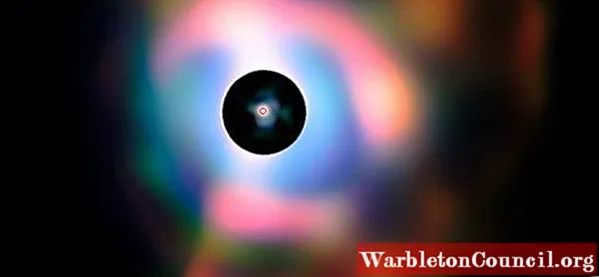

Components found in Betelgeuse
Similar to all other stars, Betelgeuse primarily consists of hydrogen and helium. Nevertheless, as it reaches its final stages, it starts to create other heavier elements from the periodic table.
Research on the nebula encompassing Betelgeuse, which is formed by the star’s ejected matter, reveals the existence of silica dust and alumina. These substances constitute the main constituents of terrestrial planets such as the Earth.
This information suggests that numerous stars resembling Betelgeuse emerged in the past, supplying the materials that form the terrestrial planets in our solar system, including the Earth.
Fading of Betelgeuse
Betelgeuse has recently made headlines around the world as its brightness started to diminish significantly within just a few months starting from early October 2019.
For instance, in January 2020, its luminosity decreased by 2.5 times. However, on February 22, 2020, the fading stopped and the star began to regain its original brightness.
While this phenomenon is observed in the visible spectrum, the star’s brightness has remained relatively stable in the infrared spectrum over the past five decades. This has led astronomers to believe that the fading is not indicative of the stages leading up to a supernova explosion.
Instead, it is believed to be caused by the absorption and scattering of the visible range of the electromagnetic spectrum by a cloud of dust expelled by the star itself.

